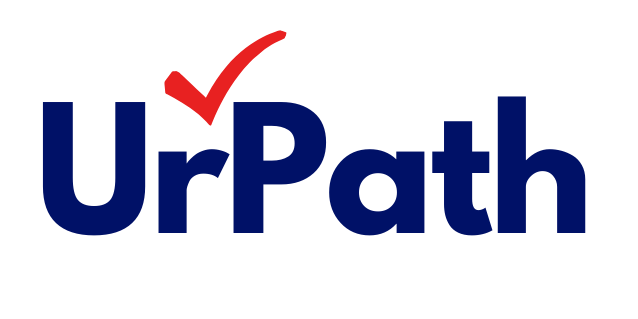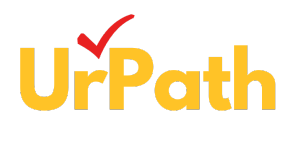Integrating AI into Higher Education: A Guide for Institutions
Stephanie Wu • October 17, 2024
Book Your Free Initial Consultation Today
8 Steps to Transform Higher Education with AI

Artificial Intelligence (AI) is rapidly transforming various sectors, and higher education is no exception. By leveraging AI tools and technologies, institutions can enhance teaching, learning, and administrative processes. Here's a guide to help higher education institutions effectively integrate AI into their practices:
1. Identify Areas for AI Implementation
- Personalized Learning: Tailor educational experiences to individual student needs, preferences, and learning styles.
- Intelligent Tutoring Systems: Provide students with personalized feedback, guidance, and support.
- Administrative Efficiency: Automate tasks like grading, enrollment management, and resource allocation.
- Research and Innovation: Use AI to analyze large datasets, identify trends, and accelerate research projects.
2. Assess AI Tools and Technologies
- Evaluate Existing Tools: Identify AI-powered tools that align with your institution's goals and resources.
- Consider Customization: Explore options for customizing AI tools to meet specific needs and workflows.
- Prioritize Scalability: Choose tools that can handle increasing workloads and accommodate future growth.
3. Develop a Strategic Plan
- Define Objectives: Clearly articulate the desired outcomes of AI implementation.
- Identify Key Stakeholders: Involve faculty, staff, students, and administrators in the planning process.
- Allocate Resources: Ensure adequate funding, technical support, and training for AI initiatives.
- Establish Governance: Create a framework for overseeing AI implementation and addressing ethical concerns.
4. Provide Faculty Training
- Offer Workshops and Training Sessions: Equip faculty with the skills to effectively use AI tools in their teaching.
- Foster Collaboration: Encourage faculty to share best practices and collaborate on AI projects.
- Support Professional Development: Provide opportunities for faculty to stay up-to-date on AI advancements.
5. Address Ethical Considerations
- Data Privacy and Security: Implement robust measures to protect student data.
- Bias and Fairness: Ensure AI algorithms are unbiased and do not perpetuate discrimination.
- Transparency and Accountability: Be transparent about AI usage and establish accountability mechanisms.
6. Pilot and Evaluate AI Initiatives
- Start Small: Begin with pilot projects to test the effectiveness of AI tools in specific courses or departments.
- Gather Feedback: Collect input from faculty, students, and staff to assess the impact of AI initiatives.
- Iterate and Improve: Continuously refine and improve AI implementations based on evaluation results.
7. Integrate AI into Curriculum
- Develop AI-Related Courses: Offer courses on AI fundamentals, ethics, and applications.
- Infuse AI into Existing Courses: Incorporate AI concepts and tools into relevant courses across disciplines.
- Prepare Students for the Future: Equip students with the skills to thrive in an AI-driven world.
8. Conduct Regular Evaluations and Adjustments:
- Quarterly Check-ins: Conduct quarterly visits to assess the performance of AI integration among students and faculty.
- Gather Comprehensive Feedback: Collect feedback from a diverse range of stakeholders, including students, faculty, and staff.
- Evaluate Effectiveness: Assess the impact of AI on student outcomes, teaching effectiveness, and administrative efficiency.
- Make Data-Driven Decisions: Use feedback and evaluation data to inform decisions about continuing, modifying, or expanding AI initiatives.
- Calculate ROI: Regularly calculate the return on investment (ROI) to ensure that AI initiatives align with institutional goals and financial sustainability.
By following these steps, higher education institutions can effectively integrate AI into their teaching and learning practices, enhancing student outcomes, improving operational efficiency, and fostering innovation.
Got Any Questions?

Entering the U.S. education market can unlock transformative growth for EdTech companies—but it requires more than just a great product. To truly resonate with U.S. institutions, decision-makers, and students, foreign EdTech firms must understand the landscape, build trust, and execute a strategic, localized approach. Here are the essential steps to building a strong U.S. market strategy—and how we can help you every step of the way. 1. Understand the U.S. Education Ecosystem The U.S. education system is complex and decentralized, with thousands of independent decision-makers across K–12 districts, higher education institutions, and public agencies. It’s critical to understand how funding works, who holds purchasing power, and what challenges institutions are trying to solve. We help you navigate this landscape by providing market insights and identifying the right entry points for your solution. 2. Tailor Your Messaging for the U.S. Audience What works in one market may fall flat in another. U.S. educators and institutions care deeply about outcomes, alignment with curriculum standards, ease of implementation, and student impact. Your marketing materials, demo content, and success stories must speak directly to these concerns. Our team works with you to localize your messaging, refine your value proposition, and ensure your brand connects with the right stakeholders. 3. Build Early Trust Through Field Marketing Participating in local conferences, school district events, or university expos is a great way to meet decision-makers and showcase your commitment to the market. Being physically present helps establish trust—especially in a relationship-driven environment like education. We support your field marketing efforts with planning, outreach, and on-the-ground execution. 4. Establish Strategic Partnerships Collaborating with the right partners—whether it’s a local distributor, a university department, or a state-run initiative—can accelerate your growth. These relationships open doors to pilot programs, case studies, and future expansion. Through our network, we introduce you to key institutional contacts and help you form partnerships aligned with your mission. 5. Commit to Long-Term Engagement Success in the U.S. market rarely happens overnight. It requires persistence, follow-up, and a willingness to listen, learn, and adapt. Schools and universities want to know you’ll be there for the long run. We help you build a U.S. presence with sustained marketing support, strategic planning, and relationship-building that lasts. Ready to Grow in the U.S.? If you're an international EdTech company ready to connect with the U.S. market in a meaningful way, we’re here to help. Our U.S. Strategy Support service is designed to guide you through every stage—from market entry to long-term success. Let’s explore what’s possible—together.

South Korea is a global leader in education and technology, with strong public investment in lifelong learning, digital upskilling, and future workforce development. For EdTech companies looking to expand, Korea presents a unique opportunity—but only for those who are ready to approach it with insight and intention. Entering this market requires far more than translating your content or launching a local version of your platform. Success demands a deep understanding of Korea’s education culture, government priorities, and the trust-based relationships that drive decision-making. That’s where our Korea Strategy Support comes in. Deep Market Insight for Real Growth We help you understand Korea’s education landscape from the inside out—so you can enter with clarity, not guesswork. This includes: How public education is structured across national, regional, and local levels Who the real decision-makers are in institutions and government What current challenges and trends are shaping the market How EdTech solutions are evaluated and adopted in both K–12 and higher education Our goal is to give you the strategic insight needed to make smart decisions and avoid costly missteps. We Connect You to the Right People We don’t just share knowledge—we open doors. Over the years, we’ve built trusted relationships with Korean universities, vocational schools, lifelong learning centers, and regional government agencies. We’ll help you: Identify the right institutional or public-sector audiences Facilitate introductions and support outreach efforts Position your offering to meet local goals and cultural expectations Form lasting partnerships built on shared educational values Whether you're looking to launch a pilot, form a licensing agreement, or scale in a specific region, we tailor the strategy around your mission and Korea’s needs. Strategy That’s Built on Trust In Korea, reputation and relationships are everything. We guide you on how to align your brand and messaging with local expectations—helping you build credibility, understand the timing of government cycles, and prepare materials that resonate with institutional leaders. With our insight and guidance, you're not just entering a new market—you’re building a meaningful presence. Let’s Explore Korea Together Korea is more than a strategic opportunity—it’s a chance to make a real impact in a country that deeply values education and innovation. We’re here to help you approach it the right way. If you’re ready to explore what’s possible, we’re ready to guide you.


